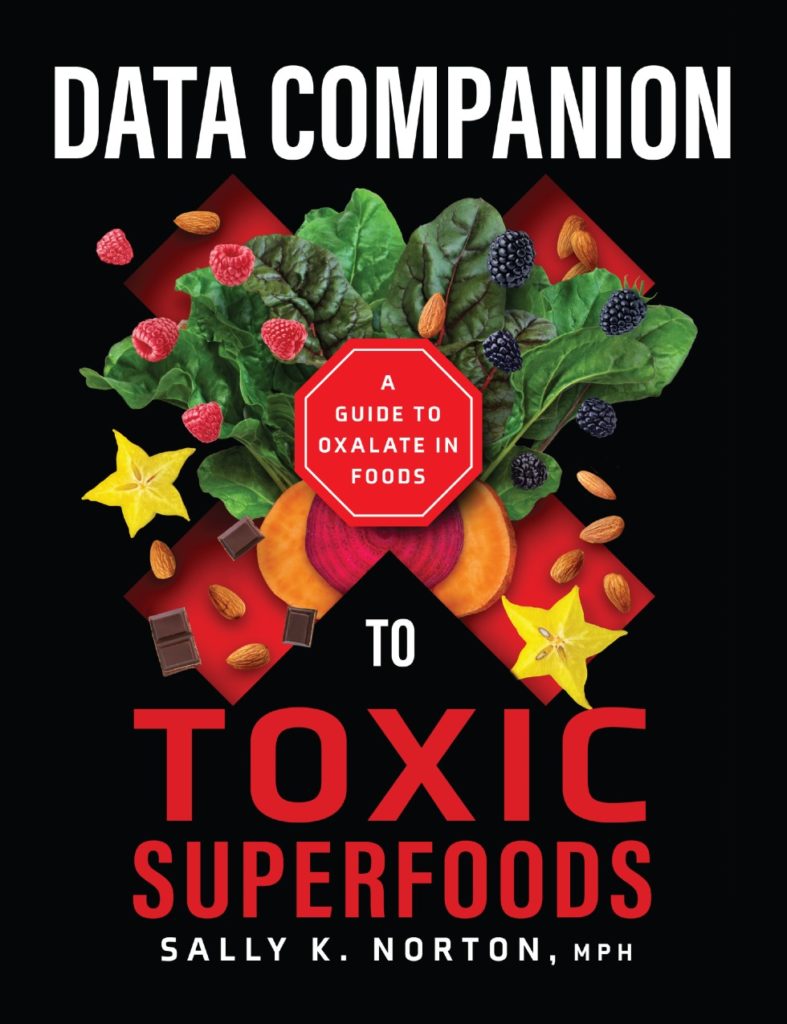The Guide You’ve Been Waiting For!
Anyone interested in oxalate-aware eating needs reliable information presented in a usable format. If you’ve already made efforts to adopt oxalate-aware eating, you may have noticed that online lists are inconsistent, incomplete, and inaccurate. They generally fail as guides for people managing their oxalate intake.
Welcome to my Data Companion to Toxic Superfoods: A Guide to Oxalate in Foods—the list that readers of Toxic Superfoods have clamored for.
We’re very close to publishing this important resource, and it will be available in two formats
- Downloadable (and searchable) PDF file
- Coil-bound print-on-demand edition (yes, an actual book!) Now available most places in the world!
Once the Data Companion is available, the button at the top of the page will take you to my print product shop so you can place an order.
What’s Inside…
The Data Companion to Toxic Superfoods contains categorized data tables for hundreds of foods (and food-like products – just because it’s low in oxalate doesn’t mean you should be eating it!). The tables present curated and summarized oxalate values you can use to plan your diet, all of which can be traced back to actual food tests. We include all the source references so you can look up the original test results yourself if you would like more information on exactly what food samples were tested and how.
Each reported data item has a standardized report of its oxalate content (in milligrams per 100 grams of food), as well as a standard serving size based on how it is commonly used. Foods prepared in different ways (e.g. boiled, roasted or steamed) are lined up next to each other so you can see what effect preparation may have on oxalate content. I’ve provided equal serving sizes for the same kinds of foods so you can easily compare them and swap high-oxalate foods for other ones that meet your oxalate intake needs.
Each food also has “data quality” indicators. Many foods have only been tested once, and some of our sources have been sloppy about carefully documenting what they’ve done. And for certain foods, the available test results from competent labs can still vary considerably due to different food varieties, growing conditions, and other factors. We have marked items where multiple tests are available but the results vary so much that it is hard to tell if the food is high or low in oxalate. The data quality indicator don’t mean the oxalate content is wrong – it just means we have limited knowledge and you should take that into account when you’re planning a diet (something I explain how to do in the Introduction to the Data Companion).
